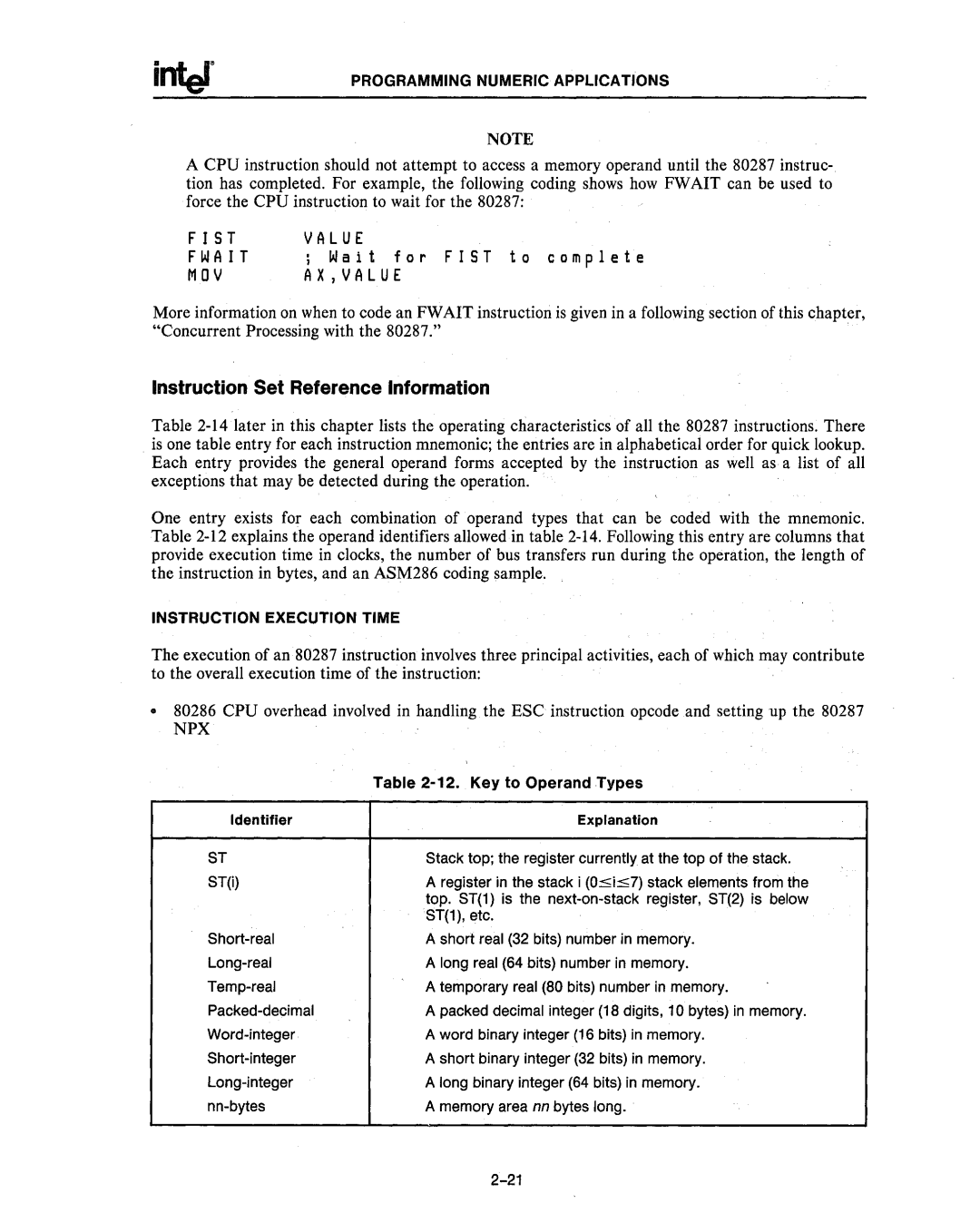
PROGRAMMING NUMERIC APPLICATIONS
NOTE
A CPU instruction should not attempt to access a memory operand until the 80287 instruc- tion has completed. For example, the following coding shows how FWAIT can be used to force the CPU instruction to wait for the 80287:
F 1ST | VALUE |
FWAIT | Walt for FIST to complete |
MDV | AX,VALUE |
More information on when to code an FWAIT instruction is given in a following section of this chapter,
"Concurrent Processing with the 80287." | . |
Instruction Set Reference Information
Table
One entry exists for each combination of operand types that can be coded with the mnemonic. Table
INSTRUCTION EXECUTION TIME
The execution of an 80287 instruction involves three principal activities, each of which may contribute to the overall execution time of the instruction:
•80286 CPU overhead involved in handling the ESC instruction opcode and setting up the 80287
NPX
Identifier
ST
ST(i)
Table 2-12. Key to Operand Types
Explanation
Stack top; the register currently at the top of the stack.
A register in the stack i (0:::;i:::;7) stack elements from the top. ST(1) is the
A short real (32 bits) number in memory.
A long real (64 bits) number in memory.
A temporary real (80 bits) number in memory.
A packed decimal integer (18 digits, 10 bytes) in memory.
A word binary integer (16 bits) in memory.
A short binary integer (32 bits) in memory.
A long binary integer (64 bits) in rJ1emory.
A memory area nn bytes long.
